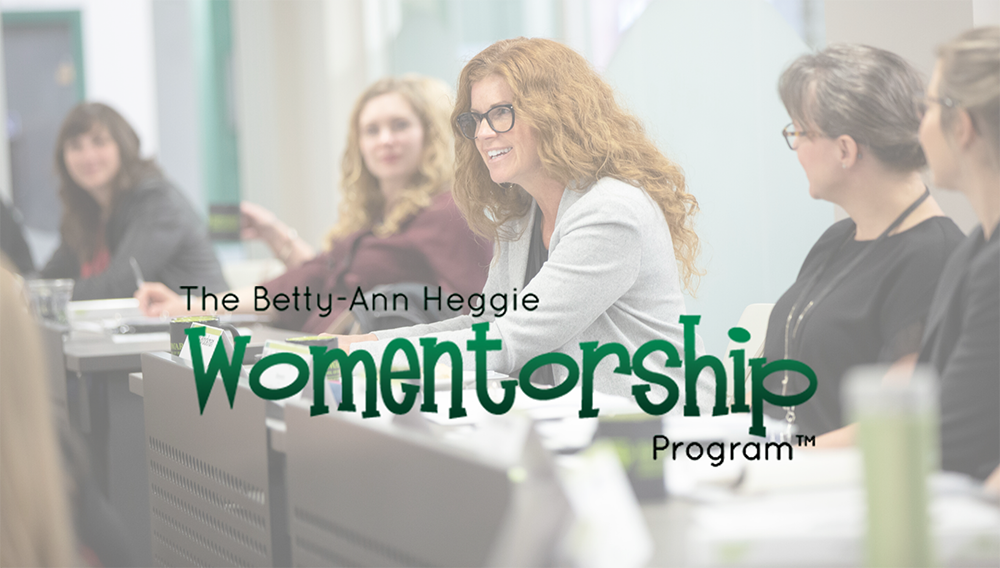
3 Ways to Make our Workplaces Better Post-Pandemic
What will our lives and work look like after COVID-19? Many of us are feeling that we’ve found rhythm during physical distancing and are now wondering what will change when this is over.
Though we are all missing what we had - for women in the workplace, there is a question of what we might leave behind as we move into the post-pandemic world. There is an opportunity for us to consider what we want our workplaces to be and how we want them to change.
For the women in the 2019-2020 Betty-Anne Heggie Womentorship Program, this was the time to reflect on the lessons that we’ve learned from this time and what we hope for in the future. Recently our group gathered (virtually) to discuss how COVID-19 has affected our workplaces and what it has meant for us.
“An upgrade on our emotional intelligence…”
It’s becoming clear to many people during this time that we all have to take care of our physical, mental, and emotional health. If we were tempted before to ignore or push to the side the emotional and mental health of our staff and coworkers, we aren’t anymore. Teams are doing daily or weekly meetings to check-in on how staff are doing and are naming the emotions that we are experiencing. It’s not uncommon to hear “I’m anxious” or “I’m worried” or for those on the front lines “I’m scared of bringing this home to my family”.
We’ve come to terms with the fact that people feel as well as think.
In the Betty Anne Heggie Womentorship discussion, one participant said we are “getting an upgrade on our emotional intelligence as a society”.
Not only did we acknowledge we have these feelings, our group also discussed that we are becoming more aware of the physical impacts our mental and emotional health are taking. Some workplaces have come up with creative solutions to get people moving such as 30-minute Pilates sessions. People are more productive when they feel healthy and well, and that includes the whole package of physical, mental, and emotional health. We feel it is important for workplaces to think of their employees as a whole person and not a body filling a job. The benefits of helping your staff thrive will certainly outweigh any short-term costs such as giving them time out of their day to exercise or have a conversation about how they are feeling. Normalizing a work culture where we all admit we are actually human beings is a good start.
No inclusion without flexibility
Women's responses on how easy or hard it was to move to work-from-home (WFH) was all over the map. This speaks to a bigger point that not one single solution will foster diversity in the workplace. If we assume that WFH is a good answer for more women to be included in the workplace and fulfill those management roles that they are already missing from, we’ve missed a vital point by starting with the solution (WFH) and working back to the problem (lack of representation).
Some women found that they were very productive from home. Some women were having a very hard time trying to work and take care of kids. Some women loved it. Some couldn’t wait to go back to their office. Some wanted part-time WFH options after the pandemic.
It’s clear that the WFH is a flexible option that works for some women and not for others. Offering flexibility for employees is about being okay with changing when, where, and how people get work done. This includes allowing for work during non-standard hours, WFH, allowing workplaces to include the social aspect that your staff may crave, and so on.
We can probably assume that once women are more equally represented in management positions, this will become the norm, but until then, we need options that keep us from opting out.
Show up for local business
The final point that all of the women on the Betty Anne Heggie Womentorship Program call echoed is that this pandemic has shown us the importance of supporting local businesses. When times get tough and people may be spending less, we see the importance of supporting locally owned and operated businesses.
We do this because we want them to stay around after this is over. Our cities and towns are better places because of all the small and medium-sized enterprises. Not only do they provide employment and contribute to our local economies, but they are what makes the places we live unique and vibrant. We need to remember post-pandemic when the fear and worry has passed, that these businesses still need us and we need them.
So, when we are all done making sourdough, buying toilet paper, and sanitizing our groceries (if we are ever going to be done with that), there are a few things that could make workplaces a little better for women. It’s true that these are not new or revolutionary ideas, but the pandemic has brought them to the surface. It’s our hope in the post-pandemic world that through these changes and more we will continue to see more female equitable and representative workplaces, especially in leadership and management. Taking advantage of this time of pause and uncertainty is what we need to do to help close the gap for women in the workplace.
